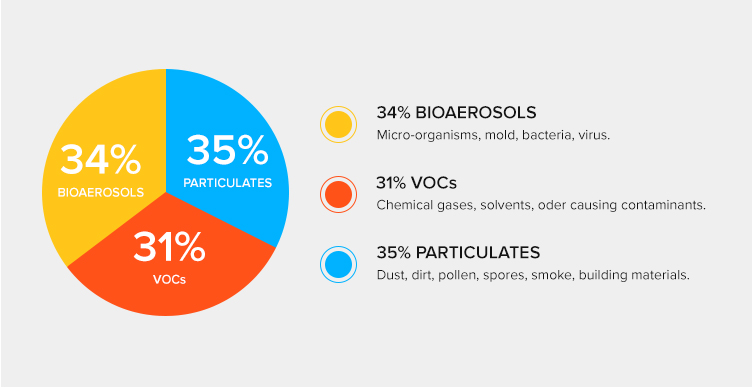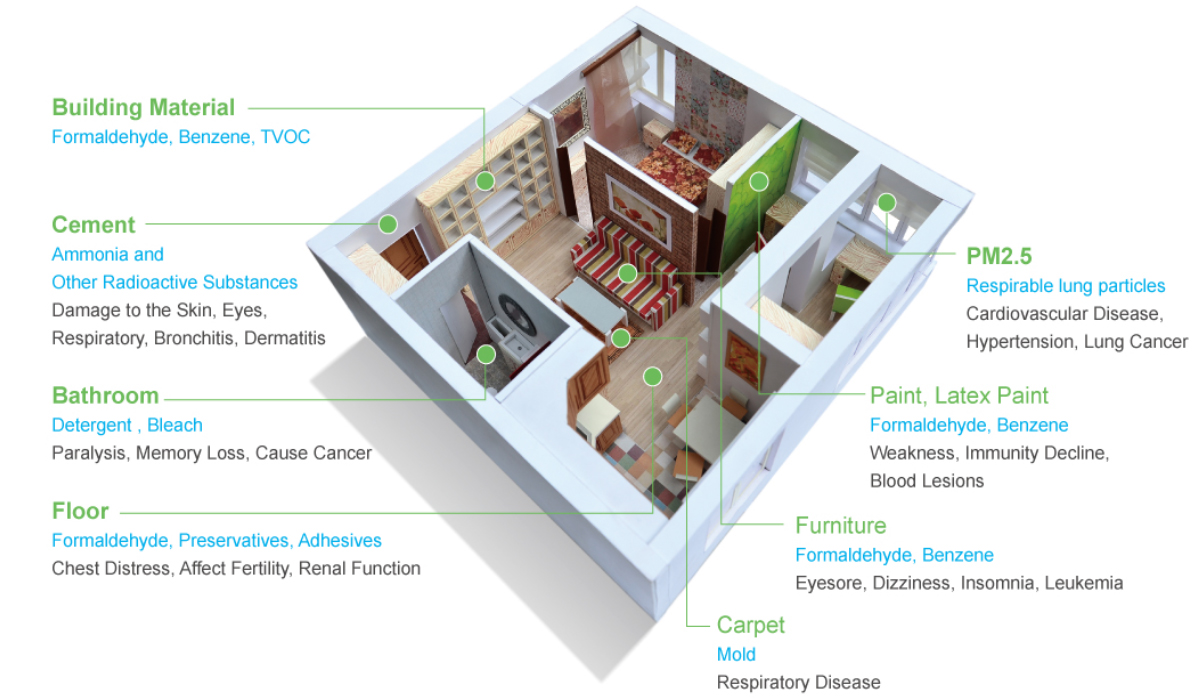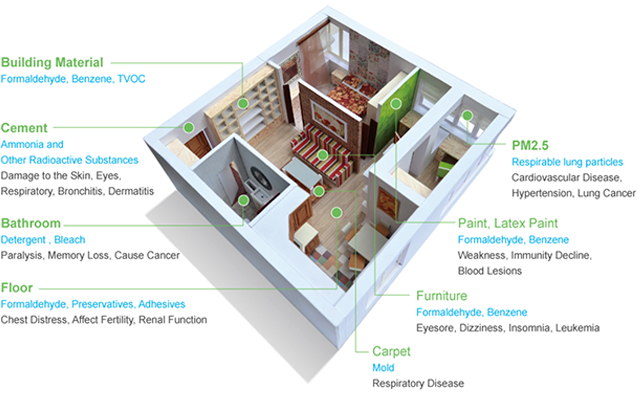Sources of Indoor Air Pollution (IAQ)
The Co-relation between Indoor Air Quality (IAQ) & Human Health
Sources of Indoor Air Pollution (IAQ)
The Co-relation between Indoor Air Quality (IAQ) & Human Health
Centre for Disease Control Analysis
(CDC USA)

Most of us spend more than half of our lives indoors, be it at work or home; or at a restaurant or mall etc.
Indoor airspaces/rooms will contain varying concentrations of bioaerosols, VOCs & particulates that can contribute to human respiratory diseases.
Understanding what is unseen in indoor air is the first step to understanding why IAQ is an important component of maintaining good health.
Volatile Organic
Compounds (VOCs)


-
BUILDING & RENOVATION WORKS:
paints & thinners, wood preservatives, cement, glues, adhesives, carpentry, floor lacquering, furniture, plasterboard ceilings & carpets etc.
-
CLEANING ACTIVITIES:
dry cleaning fluids, cleaning chemicals or disinfectants.
-
HOME MAINTENANCE:
moth repellants, air fresheners.
-
LIFESTYLE ACTIVITIES:
smoking cigarettes or cigars, charcoal burners or gas cookers.
-
HOME ACTIVITIES:
hobby and craft supplies.
-
OFFICE OPERATIONS:
copy machines, printers.
Airborne Bacterial or
Viral Contamination
-
HUMAN TRANSMISSION:
spread happens when a bacteria or virus floats through the air after a person breathes, talks, coughs, or sneezes; via through bioaerosol or droplets.
-
PET TRANSMISSION
-
PLANTS:
micro-organisms can be present in the soil or spore release for certain fungi; or from fruits & vegetables.
-
PLUMBING/SEWERAGE SYSTEMS:
a single flush to a toilet bowl can produce 145,000 aerosol particles which can remain suspended in the air for minutes to hours, with more that 50% of solid faeces containing bacteria.
-
HVAC SYSTEMS:
heating, ventilation & air-conditioning systems provide very favourable conditions for growth of airborne bacteria & fungi, due to humidity changes.
-
MOLD SPORE:
damp areas, water damaged walls or ceilings encourage bacterial growth & emission of airborne mold spores.
Dust Contamination

-
INDOOR DUST RESUSPENSION
refers to the movement of dust from the floor or furniture through fans, air-conditioning or activities like walking, vacuuming, making the bed or even folding clothes.
-
DUST MITES
are indoor microscopic pests that eat dead skin cells. Dust mites often spawn by the hundreds of thousands in mattresses, furniture, carpets & fabrics. Harmful allergens come from its faeces & body fragments & can be airborne through resuspension; triggering allergies & asthma in humans.
-
OUTDOOR AIR
can introduce dust, bioaerosols, airborne bacteria & viruses indoor.
What we commonly hear of PM2.5 refers to particles less than 2.5 micrometers/microns in diameter. (1 micrometer is 0.001mm)
Airborne PM2.5 is potentially harmful to humans as it can be breathed in & penetrate deeply into the lungs, causing all sorts of respiratory health diseases.

 18 Howard Rd, #09-04, Novelty Bizcentre,
18 Howard Rd, #09-04, Novelty Bizcentre,